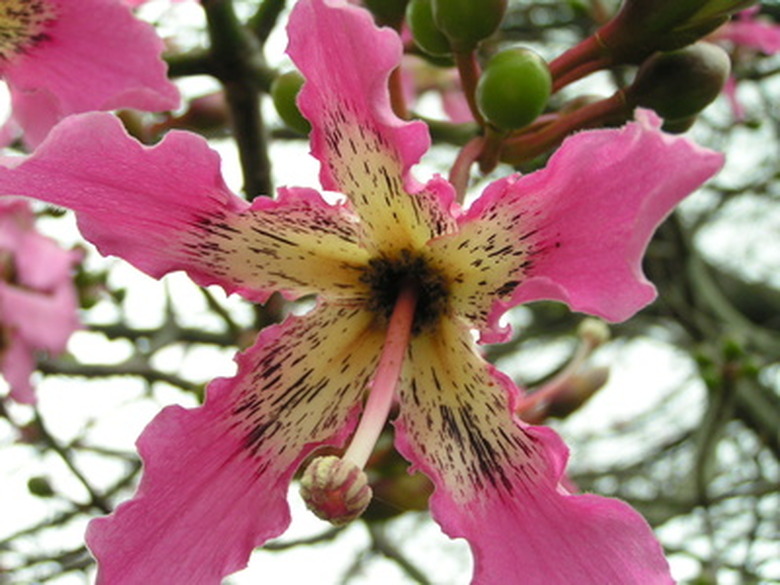Trees Of Tropical Rainforests
The tropical rainforest is a mysterious, lush landscape of dense jungle and tall canopy trees that harbors millions of species of wildlife, plants and microorganisms. Composed of many layers of plant life, the tropical rainforest is not complete without a bevy of enormous and strange trees, some of which you may be able to find in your own back yard as well.
Ceiba Trees
Ceiba Trees
The Ceiba tree genus is made up of 10 species of tree that are usually the tallest in the rainforest, often extending past the upper canopy. They have enormous root structures that can be exposed, and sometimes have green, photosynthetic branches covered in protective spines. The most popular Ceiba tree, the kapok, produces large green seed pods that are packed with yellow fluff and contain hundreds of seeds. A flowering tree, the kapok is harvested for its tough fibers that can be spun into rough fabric or stuffing.
Strangler Figs
Strangler Figs
Strangler figs are tropical trees found all over the equatorial zone of the world as far north as the state of Florida. These trees cling to life under the dense rainforest canopy by attaching their root structure to a host tree and growing around and inside of the host to gain water and other nutrients. Receiving its name from the "strangling" way it clings to and eventually kills a host tree, the strangler fig starts its life cycle on the top of the forest canopy, rather than on the floor. Growing roots downward toward to soil, the high perch of the strangler fig means it doesn't have to compete for light.
Cecropia Trees
Cecropia Trees
Cecropia trees are relatively small, exceedingly common rainforest trees that grow quickly and are used by animals and people. These trees produce long, plump fruits that transmit seeds through animal digestive tracts that arrive at their newly fertilized growing area at a greater distance from the parent tree than wind or water could carry them. Used by humans for wood, sandpaper and even rope products, the strong fibers of the cecropia tree make them useful to natives. The trees' rapid life cycle also make them the first trees to colonize areas that have suffered deforestation or land clearance.
Kauri Trees
Kauri Trees
Kauri trees, found in New Zealand's rainforest canopies, are extremely large, ancient trees that can live for over a thousand years. Unique trees that feed on decomposing forest floor material, kauri trees produce toxins that poison smaller species of insects and microorganisms that die and fall to the base of the tree, where the tree can then draw up the decomposing matter through a shallow tubular root structure. Though not common to other regions of tropical forest worldwide, kauris are among the Agathis genus that have relatives in Australia and among southern Pacific islands.
Cite This Article
MLA
Carrie, Chet. "Trees Of Tropical Rainforests" sciencing.com, https://www.sciencing.com/trees-tropical-rainforests-7300918/. 22 November 2019.
APA
Carrie, Chet. (2019, November 22). Trees Of Tropical Rainforests. sciencing.com. Retrieved from https://www.sciencing.com/trees-tropical-rainforests-7300918/
Chicago
Carrie, Chet. Trees Of Tropical Rainforests last modified March 24, 2022. https://www.sciencing.com/trees-tropical-rainforests-7300918/

